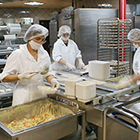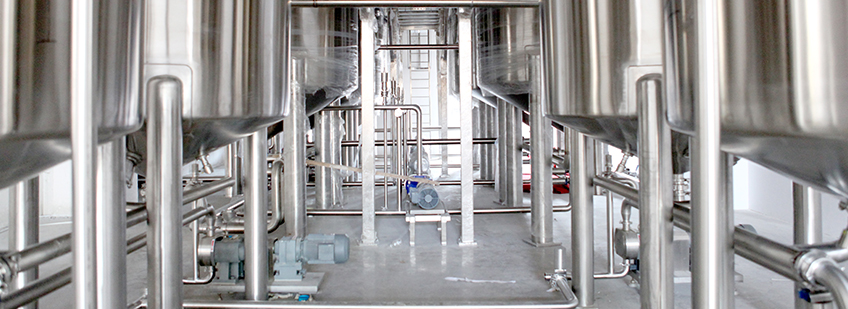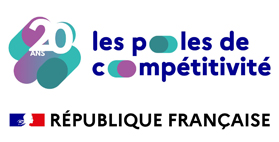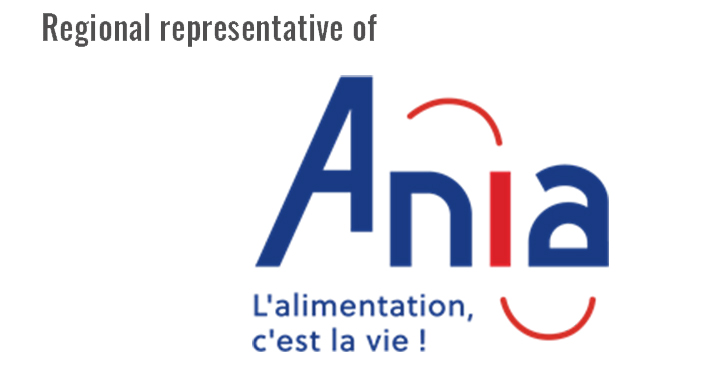23 August 2018 / The experts of the Vitagora ecosystem / Vitagora publication / Science and technologies
Air drying - a solution for optimising hygiene in the food industry?
This article is also available in French:
 Cleaning and disinfecting are essential processes in food factories. However, these procedures require large amounts of water and generate huge volumes of sewage with high loads of cleaning agents and disinfectants. What’s more, bacteria such as Listeria monocytogenes are not completely eliminated, sometimes remaining on surfaces. How can we increase the effectiveness of cleaning processes? Is it possible to reduce the resistance of Listeria monocytogenes in food factories? How can we make cleaning process more environmentally friendly?
Cleaning and disinfecting are essential processes in food factories. However, these procedures require large amounts of water and generate huge volumes of sewage with high loads of cleaning agents and disinfectants. What’s more, bacteria such as Listeria monocytogenes are not completely eliminated, sometimes remaining on surfaces. How can we increase the effectiveness of cleaning processes? Is it possible to reduce the resistance of Listeria monocytogenes in food factories? How can we make cleaning process more environmentally friendly?
Why this should interest you
- Food factory temperatures are effectively controlled, but the same cannot be said for humidity.
- Dehumidifying air can improve surface hygiene.
- Dehumidifying the air to prevent the persistence of bacteria also reduces the environmental impact of cleaning operations.
- Innovative methods for reducing the survival of microorganisms such as monocytogenes can also reduce the risk of contamination are currently being trialed.
- The aim of the ECOSEC project is to define low-energy dehumidification technology for the food industry.
Hygiene operations are an essential part of everyday life in food factories. Governed by French law and supervised by ANSES laboratories, such operations control hazards of food contamination due to microorganisms. But their efficacy can have limitations: in some cases, they do not completely eradicate bacteria and viruses, and water left on surfaces can become a source of contamination.
The ECOSEC project, accredited by Vitagora and funded by the ANR as part of the ALID (sustainable food systems) funding program, has been working for five years on optimising cleaning and disinfection processes using air dehumidification. This technique represses the growth of remaining microorganisms by drying surfaces after cleaning and disinfection. However, this technique is currently used sparingly, and often empirically as there was little data available on its ability to have a lethal impact on microorganisms.
For example, Listeria monocytogenes is a dangerous pathogen for humans that develops in many environments, including food factories. The bacteria withstands refrigerated temperatures and develops on foods such as unpasteurised milk products, cold meat, smoked salmon, and sprouts. Infections caused by L. monocytogenes are not numerous, but they are fatal in 15% to 30% of cases. It is one of the most persistent microorganisms after surface cleaning and disinfection in food factories.
Aiming to contribute to sustainable food practices, the ECOSEC project has the goal of minimising the survival of L. Monocytogenes by optimising air-dehumidification methods that are scientifically tested and approved. The results show of the project presented below indicate the key points to be taken into account for effective surface cleaning, including surface types and production methods.
 Projet ANR ECOSEC
Projet ANR ECOSEC
The project started in January 2012 for a period of five years and included academic and industrial partners: Agence Nationale de Sécurité Sanitaire, de l’alimentation, de l’environnement et du travail (ANSES), joint research unit Procédés Alimentaires et Microbiologiques (UMR PAM), Institut National de Recherche en Sciences et Technologies pour l’Environnement et l’Agriculture (IRSTEA), Laboratoire de Microbiologie du centre INRA de Theix, DESSICA, Groupe Labeyrie and Maison du Froid Conseil (MF Conseil).
The goal of the project was to reduce the environmental impact of hygiene operations in refrigerated food factories using optimised air dehumidification technology. Listeria monocytogenes was selected as the subject of the study due to its persistence despite refrigeration, cleaning and disinfection.
Through increased knowledge about the destruction of bacteria, their resistance and adaptation, it will be possible to determine how to minimise persistent bacteria on surfaces while reducing the impact on the environment.
Project findings
Water is both essential and dangerous
Water is essential for cleaning and rinsing detergent foam, but it can also cause problems. After being used to rinse surfaces, water can become a reservoir for uneliminated bacteria. Potentially contaminated water must be dried quickly and thoroughly. Manual drying is not an effective solution for large areas.
Essential parameters for cleaning surfaces
Effectiveness of cleaning depends on surface types
The project showed that ceramic tiles with crevices on the surface can store ten times more L. monocytogenes cells than a smooth ceramic tile. What’s more, the cells protected by the crevices were healthier than the more accessible cells after contact with cleaning products. It is therefore important to choose solid and smooth materials that are easy to clean and where dirt cannot accumulate. It is also important to look out for crevices or cracks due to wear to avoid potential recesses where bacteria can hide.
The nature of the residue affects how bacteria aggregate
For example, bacteria aggregate differently in smoked salmon brine and meat exudates. In meat exudates, L. monocytogenes cells stick to each other as elongated cell aggregates after culture. In laboratory culture medium modified to resemble smoked salmon brine, cells adhere but remain isolated from each other. As a result, it is necessary to treat workstations in a food factory differently, depending on the types of residues.

Dehumidification optimises cleaning and disinfection
Studies on L. monocytogenes show that combining daily air dehumidification with cleaning and disinfection had an impact on its persistence. Two types of drying were compared: a final dehumidification after cleaning and disinfection and daily dehumidification in addition to cleaning and disinfection. Clearly, drying optimises cleaning and disinfection significantly, especially if carried out daily.
Different types of dehumidification techniques
Different technologies exist: dew-point drying, dry or liquid sorption. These different systems have advantages and disadvantages. Dew-point drying is widely used but is very energy-intensive and requires defrosting. The wheels of the desiccant system are also energy intensive but effectively prevent icing problems. This can be interesting for small areas with low-air flows. Liquid desiccant systems are only energy-efficient if the heat from condensation is recovered. However, the technology is complex and should only be used for high-air flows (over 20,000 m3/hour).
The project's prospects
Tests performed on L. Monocytogenes showed resistance to osmotic stress caused by dehydration in some strains. It also appears that survival depends on the degree of dehydration, the speed, but also on the physiological conditions of the bacteria. It is essential to understand resistance mechanisms of the bacteria to establish the best conditions for destruction in order to optimise cleaning methods for the food industry. It is also still necessary to evaluate the most effective and most energy-efficient technology to control the moisture content in factories and adapt the frequency of cleaning and disinfection accordingly.
Keywords
Industry, food industry, hygiene, cleaning, disinfection, microorganisms, bacteria, listeria, dehumidification
|
Go further...For more information on the Ecosec project or decontamination techniques, contact Elodie da Silva: elodie.dasilva@vitagora.com
A food engineer from the French city of Toulouse, Elodie leads the "Innovation & Ecosystem" team of Vitagora in providing support for agrifood business innovation goals, with enthusiasm, professionalism and confidentiality. |
Further reading
- Presentations of the results of the ECOSEC project from 2015 (in French)
- COROLLER, P.L., OULAHAL, D.N., and LEBLOND-BOURGET, P.N. Impact des fluctuations de l’humidité relative de l’air sur la survie de Listeria monocytogenes : application à l’amélioration de l’hygiène dans les ateliers de production alimentaire. 250.
- Renier, S.A.A. (2012). Déterminants protéiques de la voie de sécrétion Sec impliqués dans la formation de biofilm chez Listeria monocytogenes. phdthesis. Université Blaise Pascal - Clermont-Ferrand II.




 Home
Home


















